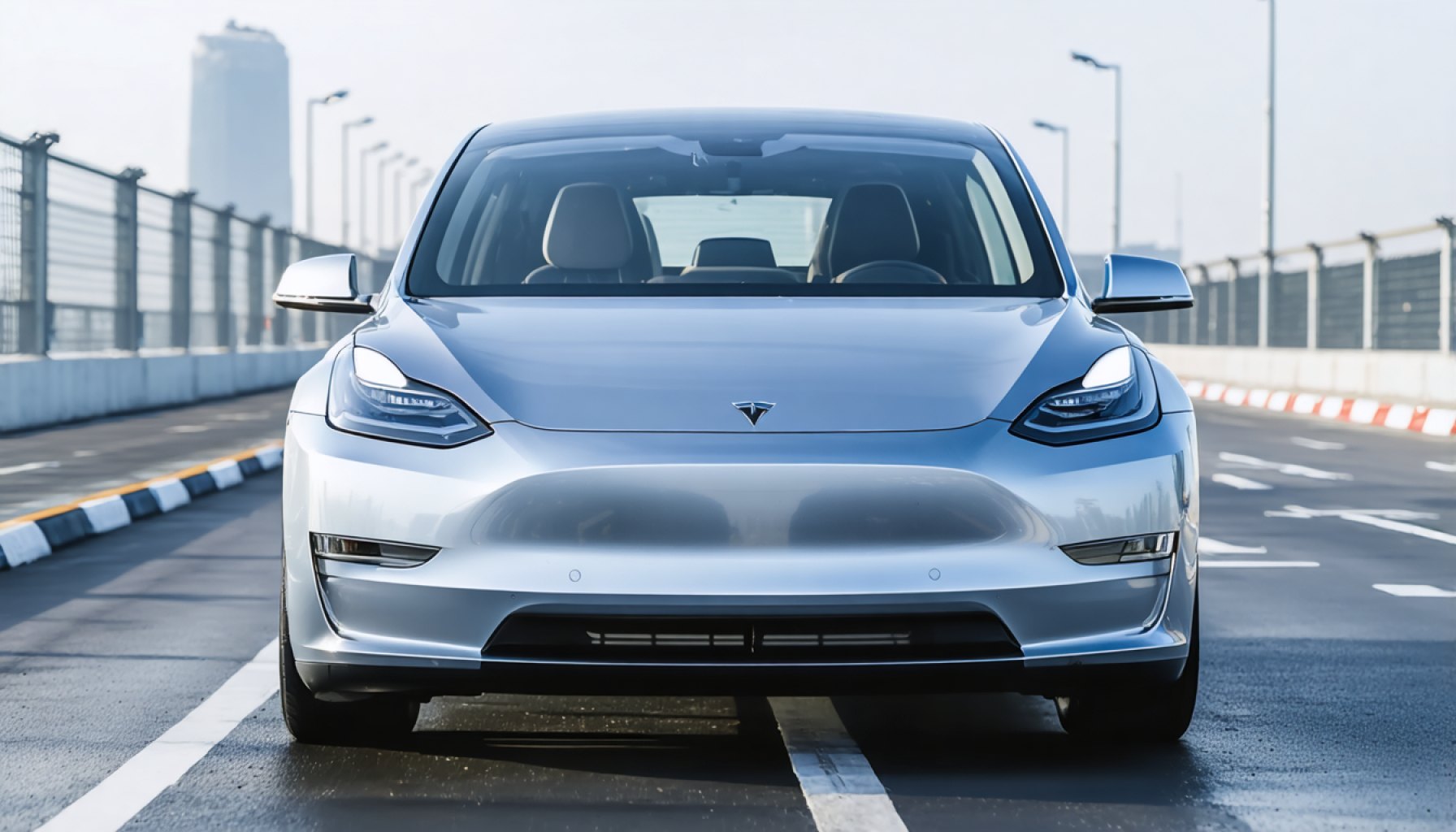- Tesla China’s vehicle registrations surged by 51% in a single week, indicating renewed domestic demand and robust market momentum.
- During the week ending April 27, Tesla registered 10,300 vehicles, significantly up from earlier April figures.
- The Model Y saw a dramatic 77.5% increase, leading with 7,100 registrations, highlighting its dominance in the EV sector.
- The Model 3 continued its steady rise with 3,200 registrations, reflecting a 14% week-over-week growth.
- This surge occurs despite Tesla’s strategy of prioritizing exports from its Giga Shanghai facility at the quarter’s start.
- Registration data, while partial, reveals increasing consumer interest and strategic production adjustments in China’s EV landscape.
- The increase suggests a shift in Tesla’s strategy to cater more to China’s evolving market, potentially impacting global EV trends.
In a dazzling display of momentum, Tesla China has dramatically accelerated its vehicle registrations, marking a remarkable 51% boost in a single week. This surge, equivalent to a crescendo in a symphony, points to a renewed vigor in domestic demand as Tesla deftly maneuvers through the first month of the second quarter.
During the week ending April 27, a flurry of activity saw 10,300 new Tesla registrations, painting a vibrant canvas of renewed consumer interest. This is a striking leap from the company’s earlier April numbers, where only 3,600 vehicles were registered in the first week, progressively rising to 5,400 and 6,780 in the subsequent weeks. At the heart of this surge are Tesla’s flagship models, the Model 3 and Model Y, crafted with meticulous precision at the state-of-the-art Giga Shanghai facility.
The Model Y, in particular, posted a sensational rise with 7,100 registrations—equivalent to a 77.5% week-over-week increase. It’s a testament to the SUV’s dominance in the electric vehicle sector. The sleek and stylish Model 3, meanwhile, rose to 3,200 registrations, extending its appeal with a steady 14% increase from the prior week.
This revival in numbers comes despite the usual strategy of allocating a significant portion of Giga Shanghai’s output for exports at the start of each quarter. The robust domestic numbers signal Tesla’s strategic balancing act may be recalibrating, catering once more to China’s ever-evolving market dynamics—a decision that could have rippling effects globally.
Although registrations provide only a slice of the Tesla China pie—while the company maintains an air of mystery with undisclosed weekly sales figures—they offer an essential glimpse into the nuanced landscape of China’s voracious electric vehicle appetite.
This surge lays a roadmap for understanding the shifting sands of consumer sentiment and strategic production scales in China’s EV market. As we witness Tesla’s electric fleet swell across China, the real story might just be nascent—a reflection of a broader, electrified horizon on the global stage. The takeaway? The winds of change are blowing, and they’re electric.
Tesla’s Registration Surge in China: What It Means for the Global EV Market
Tesla’s recent uptick in vehicle registrations in China, with a remarkable 51% boost, signals a strong domestic demand and reflects broader trends in the electric vehicle (EV) market. This exciting development offers insights into not just Tesla’s strategy but also the burgeoning EV industry in China and globally. Let’s explore some deeper insights into Tesla’s surge, address related industry questions, and conclude with actionable tips.
Exploring Tesla’s Surge in China
1. Tesla’s Model Y and Model 3: A Closer Look
– Model Y Domination: With 7,100 registrations, the Model Y’s dominance underscores the growing preference for electric SUVs in China. Known for its spacious design and impressive battery range, the Model Y is becoming a favorite among consumers.
– Model 3 Popularity: The Model 3’s rise to 3,200 registrations highlights its steady appeal. Often praised for affordability and efficiency, it’s a popular choice for those entering the EV market.
2. China’s EV Market Dynamics
– Rise in EV Shares: As of the latest reports, EV sales in China continue to climb, with projections indicating that nearly 30% of new car sales in China could be electric by 2030 (source: International Energy Agency).
– Government Incentives: China’s supportive policies, such as subsidies for EV purchases and infrastructure investments, contribute heavily to this market expansion.
3. Strategic Production and Export Balance
– Tesla’s Giga Shanghai serves dual roles—catering to local demand while exporting to other regions at the start of each quarter. The recent boost suggests a recalibration favoring domestic sales amid rising demand.
Pressing Questions About the EV Industry
What Drives China’s EV Demand?
– Environmental Policies: Stringent emission regulations push consumers towards greener alternatives.
– Infrastructure Growth: Rapid expansion of charging networks across urban and rural areas makes EV ownership more viable.
How Does Tesla Navigate Global Supply Chains?
– Battery Supply Management: Tesla’s collaborations with suppliers like CATL and Panasonic aim to secure battery supplies, essential for maintaining production momentum.
What are the Challenges Facing Global EV Adoption?
– Supply Chain Disruptions: Chip shortages and raw material constraints pose risks to production timelines.
– Consumer Education: Potential EV buyers often need more information about the long-term benefits and costs associated with EVs compared to traditional vehicles.
Actionable Recommendations
– Potential EV Buyers: Consider the total cost of ownership, including incentives and long-term savings on fuel and maintenance.
– Current EV Owners: Stay informed about charging infrastructure developments to optimize travel and reduce range anxiety.
– Investors: The shift toward electrification is clear; investing in EV-focused companies and supporting industries could be promising.
Conclusion
Tesla’s remarkable registration surge in China offers a lens into the rapidly transforming global EV landscape. With environment-driven consumer behavior, strategic production balancing, and government backing, the electric horizon is brightly illuminated. For those at the edge of this transformation, whether as consumers or investors, the time to engage with the EV transition is now.
For more insights on electric vehicles and industry trends, visit Tesla’s official website and explore further information.
Understanding the ongoing trends and embracing actionable steps can help navigate this electrified change, setting the stage for a sustainable future.
